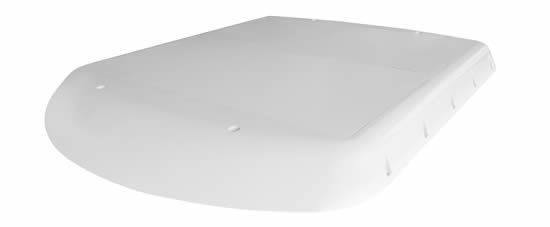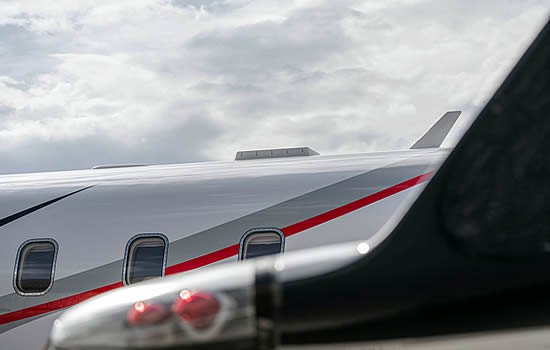 |
With the launch of Gogo Galileo’s low Earth orbit (LEO) service this year, we are delivering the high-speed, low-latency power of Eutelsat OneWeb’s low-earth orbit (LEO) constellation to business aircraft globally, regardless of their size.
Access to the service is through two electronically steered antennas (ESAs): the Gogo Galileo half-duplex antenna (HDX) and the Gogo Galileo FDX, the full-duplex variant.
The pair of antennas is changing the way business aviation passengers connect with the world and each other, for the better. And like all good siblings, they complement each other, sharing similar DNA, but with their own personalities and characteristics.

First Gogo Galileo FDX STC confirmed on BBJ 737 types.
Both antennas connect with the Eutelsat OneWeb enterprise-grade low-Earth-orbit (LEO) constellation to transmit high-speed broadband to the AVANCE LX5 software platform and on to passenger devices in fractions of a second. Both optimize advanced ESA, electronically steered phased-array technology, which, without moving parts, reduces power consumption, heat generation, and maintenance intervals.
Both terminals have been purpose-built for the specific needs of business aviation. The flat-panel format enables equipping aircraft fuselages of more sizes than ever before. Each can function independently or in conjunction with a second connectivity system for increased redundancy or for dedicated usage. Future-proofed to keep pace with connectivity evolution, both support seamless upgrade pathways and minimally invasive installation.

Gogo HDX antenna.
Yet each has its own features, carving out an individual identity in terms of performance, passenger usage, and capabilities. The Gogo Galileo HDX is a half-duplex antenna comprising a single electronically steered antenna (ESA) that constantly and seamlessly switches, extremely quickly, between transmit and receive functions to move data to and from the low-latency OneWeb network. This allows the HDX assembly to be very compact while still providing a terrestrial online experience through all phases of flight from boarding to deplaning. With an HDX antenna installed, six or so passengers can optimize high-speed broadband for simultaneous video calling, live streaming, and access to email, corporate networks, and multiple applications.

Gogo Galileo FDX ESA.
The larger Gogo Galileo FDX is a full-duplex antenna with two arrays: one for data transmission and one for receiving. The result is more than enough bandwidth to support multiple passengers performing activities similar to the HDX, or fewer cabin occupants performing extremely data-intensive operations. This makes FDX especially suited to super mid-size and larger jets, which likely carry more passengers, using data to support work, rest, and play during longer range journeys.
In absolute quality terms, Gogo Galileo FDX delivers a faster connection than HDX, but in the real world, six or seven passengers in a small or mid-size jet will receive an FDX comparable experience using an HDX system. A smaller aircraft inevitably has relatively few passenger seats, and even at full load, Gogo Galileo HDX will provide each one of those passengers with ample high-speed connectivity across multiple devices; in this context, the compact, lightweight HDX antenna is optimized for airframe size and creates a cabin full of happy, reliably connected passengers.
A larger aircraft is more likely to have space for the Gogo Galileo FDX (roughly twice the weight and size of HDX, since it effectively comprises two HDX arrays) and, given its correspondingly more spacious cabin, an increased passenger load. The bandwidth delivered can satisfy the demands of a larger cohort of streaming video-calling passengers. The technology is essentially the same, the experience is similar, and the delivery is optimized, just for a larger airframe.

Gogo ESA HDX.
There are other significant benefits to the Gogo Galileo portfolio. Operators of larger aircraft, for example, might install the smaller antenna if their regular passenger loads or internet usage fall within its still-generous limits. Alternatively, aircraft with sufficient fuselage space could mount either a Gogo Galileo antenna in addition to a terminal serving a geostationary orbit (GEO) satellite constellation or an air-to-ground system, providing redundancy, further optimized performance, and continued connection regardless of national airspace restrictions. Bandwidth can also be allocated with multi-orbit, multi-band systems enabling a principal and entourage to receive high-speed bandwidth, while crew use the alternative for operational requirements.
Speed has become the traditional, increasingly unhelpful yardstick for measuring internet connection quality. At the recent NBAA show, we flew multiple flight demos. On one flight, data-hungry passengers used 27 devices to simultaneously stream and consumed an astounding 36 GB of data in 36 minutes. Typically, a day of web browsing uses around 0.2GB, demonstrating that high-quality broadband is about capabilities, quality of experience, and the ability to connect consistently, globally. The flexibility of the system, its ease of installation and upgrade paths, and a portfolio of value-adds that enrich the duo of Gogo Galileo antennas are why elite aviation companies, including VistaJet, Luxaviation, and AvconJet are choosing the HDX, FDX, or both, to fulfill their passengers’ connectivity needs now and into the future.




